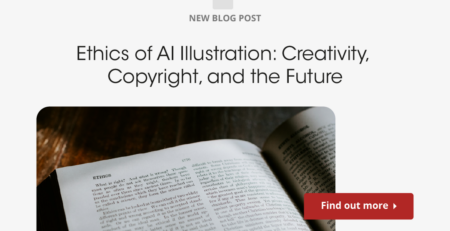Top 7 UX/UI Interview Questions Every Creative Needs to Ace Their Dream Job in the USA
Landing a dream job in UX/UI design requires not only skill and creativity but also the ability to impress during interviews. In the competitive job market of the USA, understanding the nuances of what potential employers are looking for can be the key to success. This guide delves into the top 7 UX/UI interview questions that are crucial for every creative professional to prepare for.
Interviews for UX/UI positions often revolve around not only technical skills but also soft skills that demonstrate a candidate’s ability to solve problems, communicate effectively, and fit into a company’s culture. Preparing for these questions can help you articulate your design process, showcase your projects, and convey your unique value proposition to potential employers.
Moreover, the landscape of UX/UI is continually evolving. Staying updated with the latest design trends, tools, and methodologies is essential. This guide not only covers the most asked questions but also provides insights into how to frame your answers to reflect your knowledge and enthusiasm for UX/UI design.
Whether you are a seasoned professional or a recent graduate, understanding these key interview questions can significantly enhance your chances of making a memorable impression and securing your position in a top company. Let’s explore these critical questions and how to approach them effectively.
Remember, each interview is an opportunity to learn and grow. Even if you face setbacks, each experience is a step forward in your career journey. With the right preparation and mindset, you can turn any interview into a successful stepping stone towards your dream UX/UI career.
- What are the fundamental UX design principles you follow?
Understanding and articulating the core principles of UX design is crucial in interviews. Employers want to ensure that candidates have a solid foundation in user-centered design. Discussing principles such as usability, accessibility, and interaction design not only shows your technical understanding but also your commitment to creating meaningful user experiences.
It’s beneficial to mention specific projects where these principles were applied. This not only provides concrete examples of your work but also demonstrates your ability to implement these principles in real-world scenarios. Employers appreciate candidates who can not only talk about their principles but also apply them effectively.
Additionally, discussing how you stay updated with the latest UX trends, such as through continuing education or industry events, can further bolster your qualifications. Employers look for candidates who are committed to their professional development and are well-versed in modern design practices.
For more insights into staying competitive with your UX skills, consider reading about competitive salary benchmarks and the impact of AI on UX design.
- Can you describe your design process during a project?
The ability to describe your design process clearly and effectively is vital. It gives interviewers insight into your approach to problem-solving and your organizational skills. Start by outlining the initial steps you take in understanding the project requirements, such as user research or stakeholder interviews.
Detailing each phase of your design process, from ideation to prototyping to user testing, shows a thorough understanding of UX design. It’s also helpful to discuss the tools and methodologies you use, such as Sketch or Adobe XD for wireframing and prototyping, or methods like Agile or Lean UX.
Discussing how you handle feedback and revisions is equally important. This highlights your adaptability and openness to collaborative work environments. Employers value designers who can integrate feedback constructively and enhance their designs accordingly.
For further reading on effective team management and collaboration in remote settings, check out tips for managing a remote workforce and becoming an effective remote manager.
- How do you ensure your designs are user-centric?
Ensuring that designs are user-centric is a fundamental aspect of UX design. Discuss how you conduct user research and usability testing to validate your designs. Mention specific methods you use, such as interviews, surveys, or A/B testing, and how these influence your design decisions.
It’s also effective to talk about how you incorporate user feedback into your design iterations. This not only shows that you value user input but also that you are committed to refining your designs to enhance user satisfaction.
Highlighting any challenges you faced in making designs user-centric and how you overcame them can also be insightful. This shows your problem-solving skills and your dedication to user-centered design.
To deepen your understanding of user-centric design, consider exploring resources on human-centered design and behavioral design.
- What tools and software are essential in your UX/UI toolkit?
Discussing the tools and software you use is a great way to showcase your technical skills. Be specific about the tools you prefer for different stages of the design process, such as Adobe XD for wireframing, Figma for collaborative design, or UsabilityHub for testing.
It’s also beneficial to mention any recent additions to your toolkit and how they have enhanced your design process. This demonstrates your initiative in keeping your skills current and your adaptability to new technologies.
Additionally, discussing how you leverage these tools to streamline collaboration within your team or with clients can highlight your teamwork and communication skills.
For more on the latest tools and technologies in UX/UI design, check out the best prototyping tools for UX/UI designers and UX design in the supply chain.
- How do you handle tight deadlines and multiple projects?
Handling tight deadlines and multiple projects is a common challenge in the design world. Discuss your time management and prioritization strategies. Mention specific tools or techniques you use, such as project management software or the Eisenhower Box method, to manage your workload effectively.
It’s also helpful to share examples of how you’ve successfully managed overlapping projects in the past. This can demonstrate your ability to work under pressure without compromising on the quality of your designs.
Additionally, explaining how you communicate with team members and stakeholders during high-pressure situations can illustrate your leadership and communication skills.
For additional resources on managing workloads and enhancing productivity, consider reading about boosting productivity with AI tools and preparing for economic downturns.
- How do you stay updated with the latest UX/UI trends and technologies?
Staying updated with the latest trends and technologies is crucial in the ever-evolving field of UX/UI design. Discuss your methods for keeping current, such as following industry leaders on social media, attending webinars and conferences, or taking online courses.
Mentioning specific trends you’re excited about can also show your passion for UX/UI design. For example, you might discuss your interest in virtual reality interfaces or the application of AI in user experience design.
Furthermore, sharing how you apply these trends in your projects can demonstrate your ability to integrate new ideas effectively into your work.
To explore more about the latest in UX/UI, check out articles on creative careers in education and the interplay between algorithms and design.
- Can you share a project you are particularly proud of, and what were the key successes?
Sharing a project you are proud of allows you to showcase your skills and the impact of your work. Describe the project’s scope, your specific contributions, and the outcomes. Highlighting key successes, such as measurable improvements in user engagement or client satisfaction, can be very persuasive.
Discuss the challenges you faced during the project and how you addressed them. This can show your problem-solving skills and resilience.
Including feedback from peers or clients about the project can also provide an external perspective on your success and your ability to meet and exceed project goals.
For more on project management and client relations, see managing digital projects and the importance of customer testimonials.

Conclusion
Preparing for a UX/UI design interview involves understanding both the technical and interpersonal skills required. By thoroughly preparing for these top 7 questions, you can demonstrate your proficiency in UX/UI design and your readiness to contribute effectively to potential employers in the USA.
Remember, each interview is an opportunity to not only showcase your skills but also to ensure that the company and role are a good fit for your career aspirations. With the right preparation, you can approach your interviews with confidence and secure your dream job in the competitive field of UX/UI design.
Continue to invest in your professional development by staying updated with the latest trends and technologies, and always seek to refine your design process and teamwork skills. The field of UX/UI design is dynamic, and continuous learning is key to long-term success.
For further reading on UX/UI design and career development, explore the comprehensive resources available at icreatives. Whether you’re looking for tips on navigating the job market or enhancing your design skills, icreatives offers valuable insights and guidance for every stage of your career.
Good luck with your interviews, and may your passion for UX/UI design shine through in every answer you give!
In today’s competitive market, finding the right creative and marketing expert can be a challenge. But with icreatives, you’re in experienced hands. With 37 years in staffing and a track record of matching more than 10,000 employees to over 1,000 companies worldwide, we know how to connect you with the best. Plus, you only pay if you hire—there’s no risk, only results.
Ready to find your perfect creative or marketing expert? HIRE WITH ICREATIVES today!












